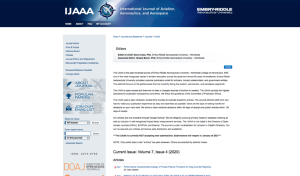 |
December 18, 2020 Volume 26, Number 49 |
The Scout Report will be on vacation December 25th and January 1st. We will return with the January 8, 2021 Scout Report. We would like to wish you, our dear readers, a happy holiday season and will see you next year!
General Interest |
Theme: Aerospace and Aviation |
Tech Tools |
Revisited |
In the News |
General InterestBack to Top | |
 |
|
 |
|
 |
|
 |
|
 |
|
Theme: Aerospace and AviationBack to Top | |
 |
|
 |
|
 |
|
 |
|
 |
|
Tech ToolsBack to Top | |
 |
|
 |
|
RevisitedBack to Top | |
 |
|
In the NewsBack to Top | |
Home (Literally) For the Holidays? Virtual Celebration Ideas Keep Festivities Holly, Jolly, and Healthy | |
|
Think 'Virtual' for Family Gatherings During the Holidays Preparing for the holidays: Virtual ideas to help keep you and your family connected How to plan a virtual holiday office party that doesn't suck Stay Cozy with these Winter Crafts for Kids 30 Best Holiday Cookies From Around the World Recipes Russian State Ballet and Opera House: The Nutcracker Experts are advising that people shift their winter holiday celebrations to virtual formats, but, with the right blend of technology and creativity, loved ones can still be festive from afar. Renee Patrone Rhinehart, a professional party planner, suggests enjoying dinner together over a preferred video conferencing platform, mailing supplies for arts and crafts, and then virtually convening to put a project together, or synchronously tuning into a movie or other form of entertainment (perhaps using a teleparty extension such as Netflix Party). A virtual cooking or baking party can also be fun, especially with the many culinary delicacies that accompany winter celebrations. Plus, many apps make virtual trivia and game nights a breeze. While "no place like home for the holidays" may be more literal than many had hoped this year, these are just a few ways readers can keep celebrations merry and bright. So, deck the Zoom background, sing "fa-la-la-la-la," over FaceTime, and remember Dr. Buchberger's advice: temporarily, "being apart is a loving, caring decision we make." [EMB] Robert Preidt's article in U.S. News, found at the first link above, offers helpful health guidance as readers make plans for winter holiday celebrations. Following the second link, readers will find that Sarah Brojack's reporting for Fox43 (Pennsylvania) provides plenty of ideas and safety tips, proving that virtual celebrations do not have to leave family traditions behind and may even provide opportunities for new ones. Of course, gatherings of family and friends are not the only celebrations getting a virtual makeover; readers responsible for organizing office holiday parties can add some zest to their Zoom event with Gwen Moran's suggestions at the third link (as reported for Fast Company). Virtual crafting and cooking activities were among the suggestions in the articles above, and readers will find tools for both at the fourth and fifth links. The fourth link leads to a crafting blog post from the Discovery Place Kids museum, while the fifth link leads to a plethora of holiday cookie recipes from nearly every continent. Finally, the sixth link provides a festive entertainment option: a recording of the Russian State Ballet and Opera House's The Nutcracker ballet. | |





